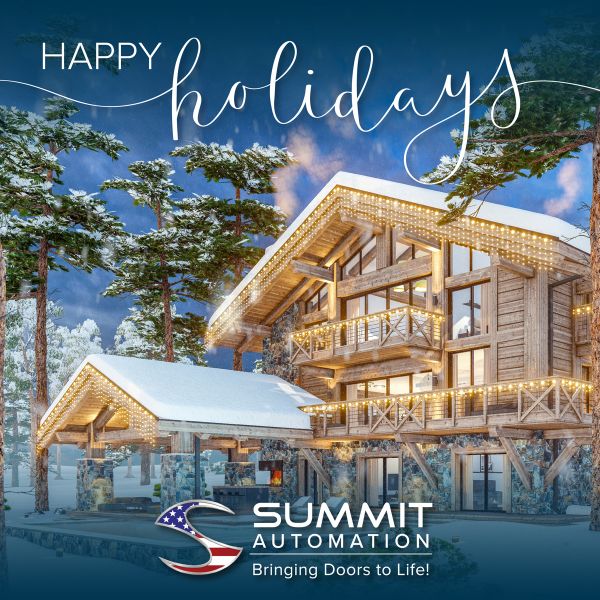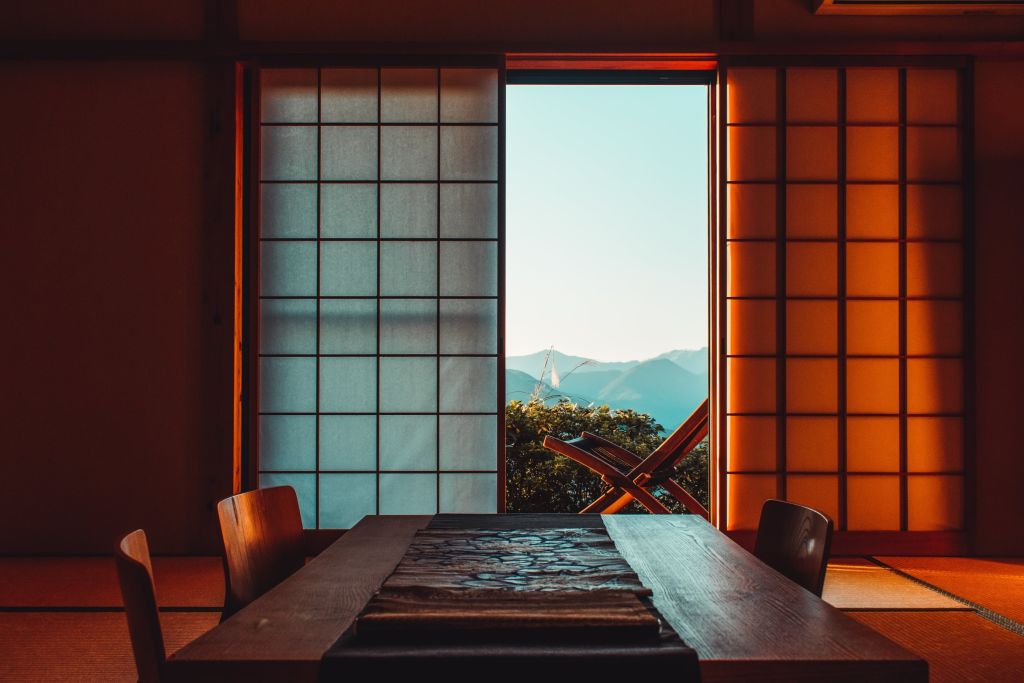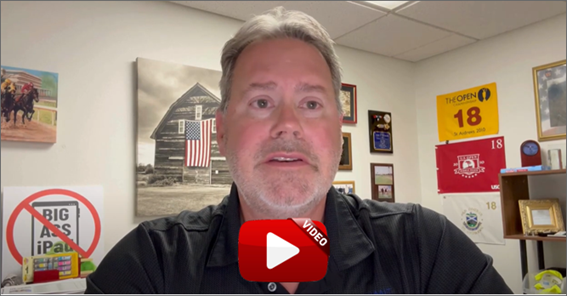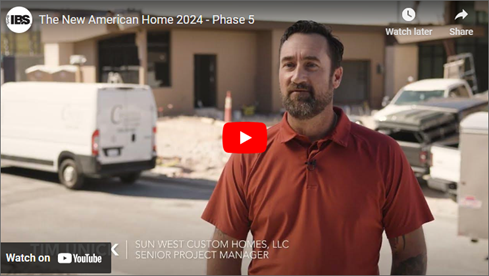2023 – It’s a Wrap!
The winter holidays are upon us. Before we get into those though, Halloween was a blast at Summit Automation! We had our annual costume contest, and some of the entries were of never-before-seen ingenuity. The creativity of our team definitely was on display for Halloween as it is every day in the designs we come up with for our automation systems.
This quarter, our focus is on service. We call our service model “Womb-To-Tomb” because we are there for you for the full life cycle of the product. Check out our educational article in this newsletter to learn exactly what is included in our Womb-To-Tomb service.
MMRs, be sure to save the last week in April 2024 for our MMR conference. If you aren’t yet an MMR, email pj@summitautomation.com to learn how you can begin working with us on door and window automation projects.
To our Customers, a group comprised of homeowners, builders, architects, door and window dealers, installers, and especially our MMRs – as the year comes to a close, we would like to thank you for another great year. We wish everyone a safe and happy holiday season, and we look forward to working together in 2024!


What is Womb-To-Tomb Service?
In a nutshell, Womb-To-Tomb refers to the entire life cycle of the product from start to finish. Now that we’ve explained the timeline covered by our service, below you can find the categories included and more details about each one.
Product Awareness
Many Customers are unaware that even large doors can be automated, that the motors can be located in a variety of locations, and the installation cost can be lowered significantly by simply modifying the rough opening a small amount during the framing stage (which also turns the project into an easier install).
Estimate
Summit provides firm estimates. You only need to provide the floor plan, door cut sheets, and elevation drawings and our team can spec in the motor & location on your behalf. This ensures the right components will match your door system and installation strategy.

Design & Integration Service
Summit even offers a one-time per project service that will integrate our motor into your DWG file so the architect may visualize where the motor will be placed. Additional integrations are also available for a small fee.
Installer Service and Certifications
Summit has a vast 3rd party network of factory-trained and certified installers who can come out and perform the installation around your schedule. In most states, Summit has Master Manufacturing Reps (MMRs) available to provide you with a turn-key solution in which they provide the motors and installation. Some of these MMRs even install the door system as well, providing you with a full-service option. We find that by using a certified installer, the builder, architect, and homeowner will have a perfect install with flawless operation for years to come.
Final Trim
Summit recommends to never leave a door automated during the construction phase of a home, as operating an automated door during this phase could cause damage to the door, sill, or opener. We recommend that once the automation is installed and operational, the installer takes a video of its operation and then decommission it until final trim (3 weeks prior to the occupancy certificate being issued). This way, the home has permanent power, and the battery backup system (included in every kit) will maintain the integrity of the system going forward.
Warranty Support
While we offer a one-year warranty from final trim, if the system is installed by one of our certified installers, rarely do our homeowners ever need to use it. Having said that, the homeowner should feel comfort knowing that in the case something does go wrong, the parts are warrantied by Summit Automation and the installation labor is covered by the certified installer.
Training Service
In those areas where we do not have previously trained certified installers nor MMRs, Summit does offer an in-house class during which the installer trainees will be trained to perform a perfect install. This service is free to the trainee for the class; however, the trainee does need to cover their own travel and expenses.
Tech Support Services
All certified installers receive unlimited tech support via video conferencing or telephone. Homeowners may also call tech support free of charge. The most common reasons homeowners call are for help with changing their passwords or batteries. By providing this service, homeowners can perform the simplest of tasks without having to call for a service tech, allowing them to have a lower overall cost of ownership for our systems.
Service Agreements
Certified installers and MMRs offer a service agreement through which they come out to tune the door, clean the tracks, adjust the panels, and perform simple maintenance routines. Please contact them for this extended service contract. Homeowners can spend quite a bit of money on door systems, and like fine cars, having someone come out to service them is a really good idea. While the motor rarely needs service, homes do settle (especially in the first four years after construction) and when things move, adjusting the doors may be a good idea, as well as recalibrating the motor system around changes made to the door.
We hope this information about our Womb-To-Tomb Service has been helpful. If you’re a Customer, and have one of our automation systems installed, please don’t hesitate to contact us with any questions. If you’ve yet to have Summit automate your doors and windows, you can take comfort in our commitment to service, and we are ready to speak with you about adding this unique feature to your home.
The History and Beauty of Shoji
Japanese homes are quite beautiful, as are the traditions and etiquette kept in households. Both the minimalistic but intentional décor, as well as the practical use of materials and space, has been adopted far and wide outside of The Land of the Rising Sun. Unfortunately, shoji, an exquisite and pragmatic feature, has not been as fast to catch on beyond the island nation-state.

A shoji can be a window, room divider, or door comprised of see-through sheets mounted on a lattice frame using rice paste (nori). The tough, translucent paper is usually made of an amalgamation of polyester and pulp (which makes them much stronger in modern times than they used to be when they were made out of rice paper (washi)). Coniferous wood options are the favored choice for frames because they offer a straight, fine grain – think cedars, firs, oak, and rosewood.
When the shoji is a door, it slides on tracks made of wood, so the operation is quiet and smooth (just like automated doors using a Summit solution). This brings versatility because the door can then be used as a divider between rooms and even to cover windows. Light is beautifully and softly diffused when shoji are closed, giving the entire house somewhat of a glow.
Benefits of shoji include introducing soft, ambient light to the space, the natural materials and symmetrical lines are pleasing to the eye, and helping to both maintain the temperature within the room and either help keep warm or cool the home (depending on the season).
The use of shoji began in China as heavy, bulky folding screens used solely to separate rooms, and cultural art shows them in use from about 200 BCE. The concept was brought to Japan around the 7th or 8th century. The term “shoji” signifies ‘something to obstruct’.
Shoji are just one entry in the world’s long and interesting history of doors. Have you ever been to a home or structure in Japan that had shoji? Would you consider adding them to your home? If you do, and you want to add to their sophistication and elegance, Summit Automation is ready to make your shoji open and close at the push of a button or a tap in our app on your mobile device!
In February, join us in Las Vegas to see our automation solutions displayed by world leading window and door manufacturers at NAHB’s IBS event and the 2024 The New American Home!




